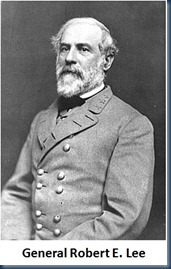 When I was pursuing my graduate degree in Civil War history, one of the issues I was most interested in examining was Robert E. Lee’s decision to resign from the US Army and enter the service of his home state, Virginia, and, eventually, the Confederate States of America. As a former career military officer, I wanted to understand why a professional soldier like Lee, and especially one so dedicated, talented, and successful, would take this course, one that did not merely include resigning on principle, but also actively engaging in warfare against the United States.
When I was pursuing my graduate degree in Civil War history, one of the issues I was most interested in examining was Robert E. Lee’s decision to resign from the US Army and enter the service of his home state, Virginia, and, eventually, the Confederate States of America. As a former career military officer, I wanted to understand why a professional soldier like Lee, and especially one so dedicated, talented, and successful, would take this course, one that did not merely include resigning on principle, but also actively engaging in warfare against the United States.
Of course, I knew the version I had learned in grade school, the one that said Lee served the Confederacy because his first loyalty was to his home state and that he could not fight against his own family. However, as I grew older, I could see that, while that explained his resignation, it did not answer why he rushed into service with those whose cause he supposedly did not support. After all, the Lost Cause version of Lee, which was the one we all had shoved down our throats as children, said that, while Lee hated slavery and opposed secession, his choice between the United States and Virginia was an easy one. This was Lee the saint, the man of pure nobility who was incapable of acting out of any sense of personal ambition, and this was the Lee commonly accepted by most Americans for more than a century.
In recent decades, however, there has been significant study aimed at deciphering the historical enigma of Robert E. Lee. Historians such as Thomas Connelly, Alan Nolan, and Emory Thomas, as well as journalists like Roy Blount, produced new works examining Lee as a human being and not a saint. Some, such as Nolan, took very harsh and radical views of Lee, painting him as a man driven by personal ambition. Others, like Thomas and Blount, perceived a Lee driven by his own personal demons, a man bred from childhood to restore his family name, and someone who shrank from the prospect of any personal confrontation.
Therefore, when these writers broached the subject of Lee’s resignation, they had diverging views. Nolan and even Connelly tended to believe that Lee planned his course carefully and that he always intended to break with the US Army and obtain a command position in Confederate service. Thomas and Blount, meanwhile, believed that Lee acted out of a need to advance the Lee name among Virginia’s ruling elite and avoid confrontation with family members, who were believed to be ardent secessionists, especially his wife, Mary Anna Custis Lee. For my part, I tended to side with Thomas and Blount’s position, although I harbored my own suspicions about Lee’s personal drive and ambition. But, a few weeks ago, a new source of information was revealed that sheds more light on Lee and the path he elected to take.
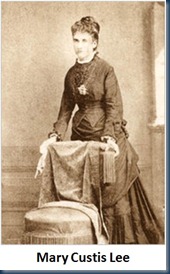 The source of this new information is a letter discovered by historian Elizabeth Brown Pryor. In 2008, Pryor published a marvelous analysis of Lee, Reading the Man: A Portrait of Robert E. Lee through his Private Letters, which was based on a cache of previously unknown personal letters from the general. Recently, she discovered a letter written in 1871 by his eldest daughter, Mary Custis Lee, to Charles Marshall, Lee’s former aide. Marshall was preparing to write a biography of Lee and Mary wrote him to describe the events surrounding Lee’s resignation, events she personally witnessed. Unlike the many second hand accounts historians have relied upon up to now, Mary’s letter vividly details conversations and moments in which she was either a witness or a participant, and her eyewitness testimony turns the popular Lost Cause version of events on its head.
The source of this new information is a letter discovered by historian Elizabeth Brown Pryor. In 2008, Pryor published a marvelous analysis of Lee, Reading the Man: A Portrait of Robert E. Lee through his Private Letters, which was based on a cache of previously unknown personal letters from the general. Recently, she discovered a letter written in 1871 by his eldest daughter, Mary Custis Lee, to Charles Marshall, Lee’s former aide. Marshall was preparing to write a biography of Lee and Mary wrote him to describe the events surrounding Lee’s resignation, events she personally witnessed. Unlike the many second hand accounts historians have relied upon up to now, Mary’s letter vividly details conversations and moments in which she was either a witness or a participant, and her eyewitness testimony turns the popular Lost Cause version of events on its head.
First, there is the issue of the Lee family. Pryor states that Mary’s letter, as well as other previously unknown family documents, indicates members of the Lee clan did not universally support the Confederacy, Virginia’s secession, and the idea of resigning from Federal service. While younger family members like Lee’s nephew, Fitzhugh Lee, were anxious to take up arms for the Confederacy, other relatives with more established military careers rejected the Southern cause and did so forcefully. In a recent New York Times editorial, Pryor describes a “grim” dinner where two of Lee’s cousins, Samuel Phillips Lee, who was a naval officer, and John Fitzgerald Lee, who was judge advocate in the US Army, told him that they planned to uphold their oaths and remain in Federal service. At the same dinner, his sister, Anne Lee Marshall, informed Lee in no uncertain terms that she would support the North. Based on this evidence, Lee’s eventual decision meant that, rather than ensuring he did not fight against his family, he was now virtually assured of going to war against several of them.
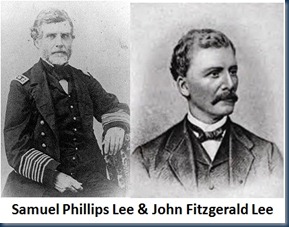 As to Lee’s actual decision process, Mary Lee’s letter is very revealing. She recalled that her father was calm and that, rather than pacing and praying intensely as he pondered his fate, he actually conducted his deliberations quietly, alone in his office, and without any dramatic fanfare. On the morning of April 20, he gave his resignation letter to a slave for delivery to General Winfield Scott. However, as Pryor points out, what is most remarkable is that he did not immediately inform his wife and children of his decision. He would eventually tell them and apologized, saying, “I suppose you will all think I have done very wrong.” In fact, Mary noted that she was the only ardent secessionist in the family and that her mother was particularly strong in her support of the Union. Mary wrote that her father’s confession left them utterly speechless.
As to Lee’s actual decision process, Mary Lee’s letter is very revealing. She recalled that her father was calm and that, rather than pacing and praying intensely as he pondered his fate, he actually conducted his deliberations quietly, alone in his office, and without any dramatic fanfare. On the morning of April 20, he gave his resignation letter to a slave for delivery to General Winfield Scott. However, as Pryor points out, what is most remarkable is that he did not immediately inform his wife and children of his decision. He would eventually tell them and apologized, saying, “I suppose you will all think I have done very wrong.” In fact, Mary noted that she was the only ardent secessionist in the family and that her mother was particularly strong in her support of the Union. Mary wrote that her father’s confession left them utterly speechless.
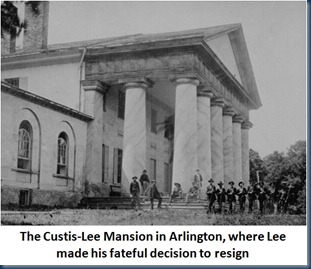 Further, as Elizabeth Pryor points out in her editorial, the most astonishing thing about Mary’s story is that Lee made this decision alone. He sought no advice and, unlike the conventional version of Lee’s resignation, there was absolutely no pressure on Lee from either family or colleagues to leave the Army. In fact, any pressure there may have been was for the exact opposite course. As Pryor writes, “If even his wife, and most of his children, did not support his stand, Robert E. Lee must personally have wanted very much to take this path.”
Further, as Elizabeth Pryor points out in her editorial, the most astonishing thing about Mary’s story is that Lee made this decision alone. He sought no advice and, unlike the conventional version of Lee’s resignation, there was absolutely no pressure on Lee from either family or colleagues to leave the Army. In fact, any pressure there may have been was for the exact opposite course. As Pryor writes, “If even his wife, and most of his children, did not support his stand, Robert E. Lee must personally have wanted very much to take this path.”
For me, while this fascinating information sheds new light on Lee and the events surrounding his resignation, I am still of the same opinion as to why he chose as he did. While he clearly was not trying to avoid confrontation with his family, he still had that one personal demon to serve, the one his mother created, and the one that said the Lee family name must be restored to glory among Virginia’s first families. Certainly, serving the United States in a campaign against his native state would not add any luster to the Lee name. But leading Virginia’s forces or those of the Confederacy to victory in 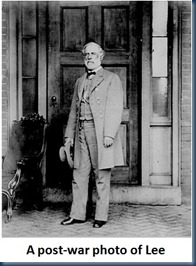 creating a new independent Southern nation most certainly would.
creating a new independent Southern nation most certainly would.
Therefore, I believe it was an ambition of sorts that drove Robert E. Lee to resign from the army he loved so much, to turn his back on his oath of office, and to serve the Confederacy. However, it was not an ambition of his own making—it was one he was raised to pursue, one that was pounded into him as a boy, and one he probably could not refuse. In the end, his sense of duty to the Lee name trumped duty to service and country.





